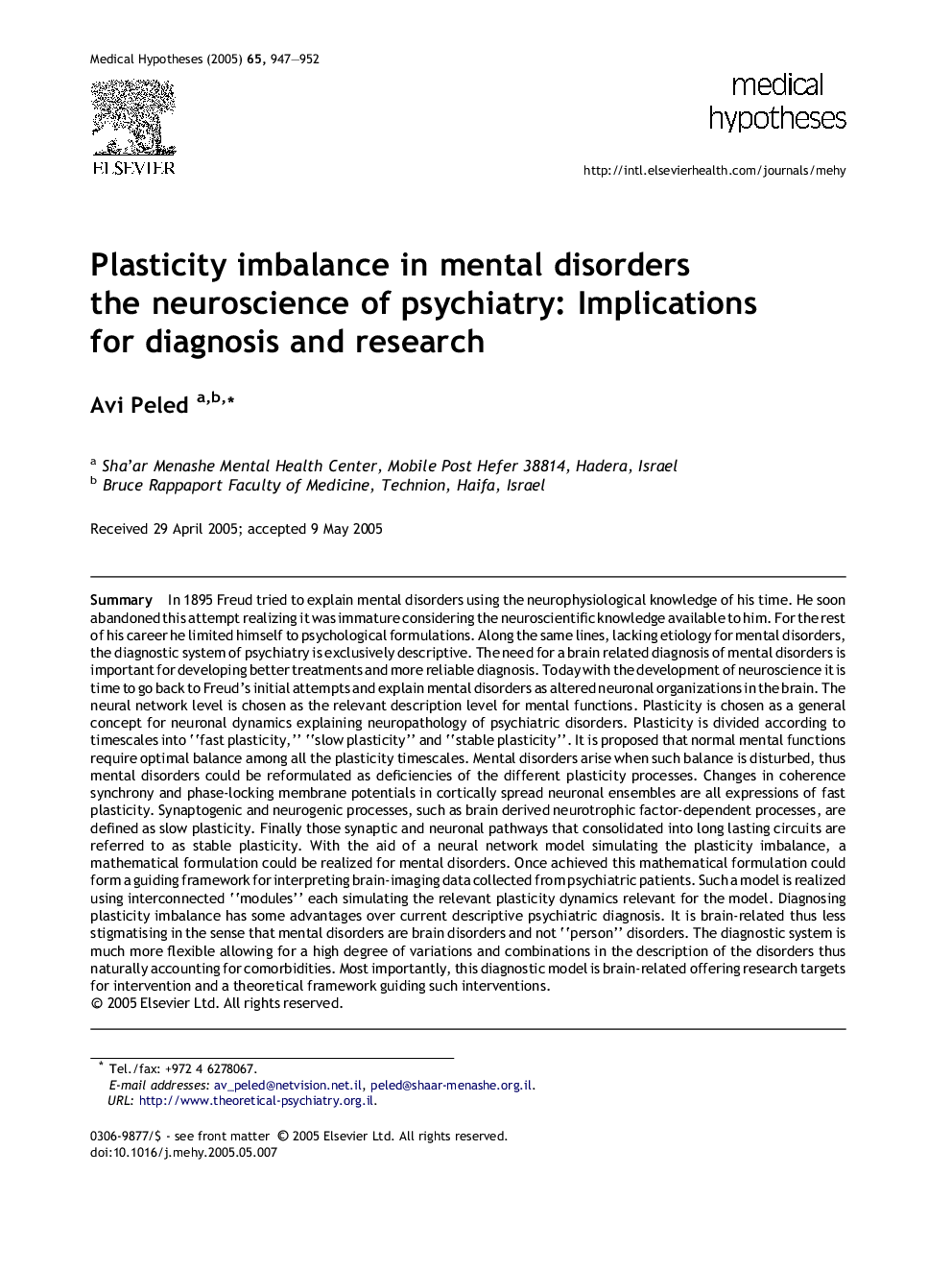| کد مقاله | کد نشریه | سال انتشار | مقاله انگلیسی | نسخه تمام متن |
|---|---|---|---|---|
| 8996643 | 1115138 | 2005 | 6 صفحه PDF | دانلود رایگان |
عنوان انگلیسی مقاله ISI
Plasticity imbalance in mental disorders the neuroscience of psychiatry: Implications for diagnosis and research
دانلود مقاله + سفارش ترجمه
دانلود مقاله ISI انگلیسی
رایگان برای ایرانیان
موضوعات مرتبط
علوم زیستی و بیوفناوری
بیوشیمی، ژنتیک و زیست شناسی مولکولی
زیست شناسی تکاملی
پیش نمایش صفحه اول مقاله

چکیده انگلیسی
In 1895 Freud tried to explain mental disorders using the neurophysiological knowledge of his time. He soon abandoned this attempt realizing it was immature considering the neuroscientific knowledge available to him. For the rest of his career he limited himself to psychological formulations. Along the same lines, lacking etiology for mental disorders, the diagnostic system of psychiatry is exclusively descriptive. The need for a brain related diagnosis of mental disorders is important for developing better treatments and more reliable diagnosis. Today with the development of neuroscience it is time to go back to Freud's initial attempts and explain mental disorders as altered neuronal organizations in the brain. The neural network level is chosen as the relevant description level for mental functions. Plasticity is chosen as a general concept for neuronal dynamics explaining neuropathology of psychiatric disorders. Plasticity is divided according to timescales into “fast plasticity,” “slow plasticity” and “stable plasticity”. It is proposed that normal mental functions require optimal balance among all the plasticity timescales. Mental disorders arise when such balance is disturbed, thus mental disorders could be reformulated as deficiencies of the different plasticity processes. Changes in coherence synchrony and phase-locking membrane potentials in cortically spread neuronal ensembles are all expressions of fast plasticity. Synaptogenic and neurogenic processes, such as brain derived neurotrophic factor-dependent processes, are defined as slow plasticity. Finally those synaptic and neuronal pathways that consolidated into long lasting circuits are referred to as stable plasticity. With the aid of a neural network model simulating the plasticity imbalance, a mathematical formulation could be realized for mental disorders. Once achieved this mathematical formulation could form a guiding framework for interpreting brain-imaging data collected from psychiatric patients. Such a model is realized using interconnected “modules” each simulating the relevant plasticity dynamics relevant for the model. Diagnosing plasticity imbalance has some advantages over current descriptive psychiatric diagnosis. It is brain-related thus less stigmatising in the sense that mental disorders are brain disorders and not “person” disorders. The diagnostic system is much more flexible allowing for a high degree of variations and combinations in the description of the disorders thus naturally accounting for comorbidities. Most importantly, this diagnostic model is brain-related offering research targets for intervention and a theoretical framework guiding such interventions.
ناشر
Database: Elsevier - ScienceDirect (ساینس دایرکت)
Journal: Medical Hypotheses - Volume 65, Issue 5, 2005, Pages 947-952
Journal: Medical Hypotheses - Volume 65, Issue 5, 2005, Pages 947-952
نویسندگان
Avi Peled,